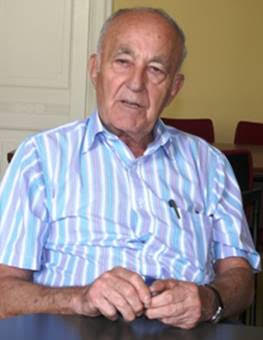
THE VOICE OF INTERNATIONAL LITHUANIA
|
VilNews has its own Google archive! Type a word in the above search box to find any article.
You can also follow us on Facebook. We have two different pages. Click to open and join.
|
Archive for November, 2011
Christmas Charity Bazaar background
- Posted by - (0) Comment
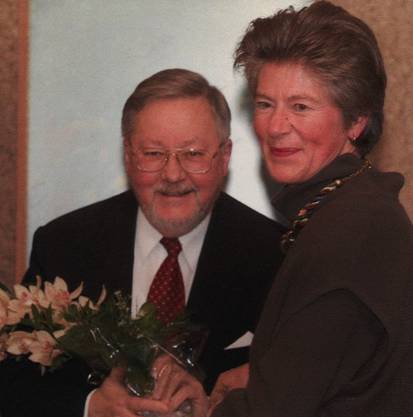
Gunilla Possenius with Professor Vytautas Landsbergis.
By: Gunilla Possenius
Vilnius´ International Christmas Charity Bazaar is approaching - but how and when did it start?
For the ninth year Vilniaus Rotuse will open its doors for the International Christmas Charity Bazaar (ICCB) on December 3. This annual event has become one of the true signs that Christmas is approaching.
But how many know today how it all really started? Over the years, inaccurate information regarding how ICCB started was circulating. So now it is time for the true story to be told.
- Bookmark :
- Digg
- del.icio.us
- Stumbleupon
- Redit it
Christmas Charity Bazaar background
- Posted by - (1) Comment

Gunilla Possenius with Professor Vytautas Landsbergis.
By: Gunilla Possenius
Vilnius´ International Christmas Charity Bazaar is approaching - but how and when did it start?
For the ninth year Vilniaus Rotuse will open its doors for the International Christmas Charity Bazaar (ICCB) on December 3. This annual event has become one of the true signs that Christmas is approaching.
But how many know today how it all really started? Over the years, inaccurate information regarding how ICCB started was circulating. So now it is time for the true story to be told.
Of course, other kinds of Christmas bazaars were arranged in Vilnius before the first ICCB in 2003.
IWAV, the International Women´s Association of Vilnius, under whose umbrella the ICCB now is organized, many years had a bazaar-like event at its November or December Monthly Membership Meetings with handicrafts and Christmas things from local organizations or artists.
Also, SWEA Vilnius (the local branch of Swedish Women’s Educational Association International, Inc.) together with the International Church of Vilnius had its Christmas Bazaar in Sandora Hall in connection with its Lucia celebration in the Evangelical Lutheran Church in Vokieciu 1999-2003.
In 2000, the Swedish Embassy organized a Swedish Christmas Bazaar in the exhibition hall of the Embassy. In 2002, the Austrian Embassy organized an Austrian Christmas Bazaar in the residence.
However, none of these could qualify as International Christmas Bazaars. Not even the SWEA/International Church Bazaar, although the SWEA Vilnius membership counted ten different nationalities and the Church many more.
For a Bazaar to be International a number of countries must be represented and/or participating, selling items from different countries.
History of ICCB
In autumn 2002, Gunilla Possenius (President of the Swedish Women’s Association, SWEA Vilnius) and Åshild Hauge (wife of the Norwegian Ambassador), during a walk in Vingis Parkas discussed the possibility of setting up an International Christmas Bazaar in Vilnius. From previous postings, both of them had experience of International Christmas Charity Bazaars in other countries.
Already, a number of international ladies were involved in the mini-Bazaar and the annual Lucia celebration which, since 1999, SWEA Vilnius was running together with the International Church of Vilnius (of which Åshild was a board member) in the Lutheran church on Vokieciu.
In early December 2002, at an Austrian bazaar at the Ambassador’s residence, Gunilla, with her talks with Åshild in mind, asked Rosie Schwarzinger, the wife of the Ambassador, whether she would be interested in joining a group with some potential other ladies Gunilla would contact, to try to put together an International Christmas Bazaar. Rosie said she would absolutely not be able to be the motor herself or play an active part, but could join a group in case one was to be formed.
At that event, Gunilla informed Agne Zuokiene, of her plans to try - together with some other ladies - to give Vilnius what other capitals already had, an International Christmas Bazaar. Agne was pleased and would inform her husband, the Mayor of Vilnius.
In January 2003, Åshild and Gunilla informed VIC’s Charity Group (chaired by Ambassador Kåre Hauge) about the Bazaar plans. Åshild and Gunilla agreed that the Bazaar was to be run in a truly "Scandinavian" way, i.e. not let any person, organization or entity - private or public - use the Bazaar for their own promotion or ends, but always present it as an endeavour and achievement of a group of women. Nobody would be able to arrange a Christmas Bazaar on her own, anyway.
In January, Gunilla had also contacted Charlotte Davnie, IWAV’s longtime Charity Chair, from the US, and Birute Vizgirdiene, a much needed Lithuanian addition to the group with excellent contacts in Lithuania.
The five ladies met at the Norwegian residence, on March 19, 2003. There, Birute booked Rotuse for November 22, 2003, and it was agreed that Gunilla should send out an invitation to all embassies, to AISV staff and parents, to IWAV for its members and to SWEA members to a first meeting later in April, again at Åshild’s.
At two meetings in April at Åshild´s, working groups were created and various crafts groups were formed involving well over 40 ladies. As a working name, Gunilla suggested International Christmas Charity Bazaar (ICCB), which was accepted by the group as the permanent name. Anne Elsérius, having some years earlier created the labels for our SWEA glögg bottles, sold at the SWEA Bazaars, was asked to suggest some logos.
One of them was later accepted by the group as the official ICCB logo.
Three of the ladies asked by Gunilla to join her, also took on special tasks for the joint Bazaar working groups, in addition to being responsible for and working with their own country stands: Charlotte Davnie was in charge of Charity, Åshild Hauge coordinated baked products for the Bazaar Café and Birute Vizgirdiene handled contacts with Lithuanian authorities and media as well as translations.
All other contacts, administration and anything that fell between the chairs landed on Gunilla’s table.
The other four in the original group suggested Gunilla, who started it all, be the first ICCB Coordinator, which was approved by the larger group.
Our partners Radisson SAS Astorija, who ran the Bazaar Café and arranged for security, and Visus Plenus, who arranged stands and all equipment, both kindly signed all necessary documents for us, since we at that time did not yet have IWAV as our umbrella.
The first International Christmas Charity Bazaar (ICCB) in Vilnius took place on Saturday, November 22, 2003, 10 a.m.-16 p.m., in Vilniaus Rotuse (City Hall), Didzioji 31.
Participating with stands were Austria, China, Czech Republic, Germany, Hungary, Italy, Japan, Lithuania, the Nordic Countries (Denmark, Finland, Norway, Sweden), Romania, Turkey, USA and the EU Delegation.
Vilnius International Rotary Club and the school Siuolaikines mokyklos centras also had stands of their own. The Lithuanian organizations Mazoji Guboja, Mes Esame, Markuciai and day centre Sviesa as well as Unicef and Atsigresk were invited to display and sell their items for their own charities.
The Bazaar was opened by the then First Lady, Mrs.Laima Paksiene, who at her own request sold her home-baked cookies at one stand. Mr. and Mrs. Adamkus both attended the Bazaar and expressed their joy and gratitude for us having arranged this first International Christmas Charity Bazaar in Vilnius.
The amount raised, LTL 63,000, was divided between Vytatuto Landsbergio Fondas for Vilnius University Children’s Hospital at Santariskes, Vilnius Municipality’s Social Support Centre (Socialines paramos centras), Gelbekit Vaikus (Save the Children) and Sv. Jono Vaikai’s home for street children.
A lengthy report on the first ICCB was published in IWAV’s newsletter, December 2003.
Gunilla Possenius
ICCB Initiator and Coordinator 2003
- Bookmark :
- Digg
- del.icio.us
- Stumbleupon
- Redit it
- Posted by - (0) Comment
Olga Zabludoff: Reply to Donatas Januta re Holocaust in Lithuania
There was only one genocide
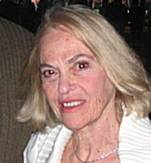
Olga Zabludoff
Dear Donatas,
The ball is now in my court and I am happy to continue the discussion. It might be that you and I have an irreconcilable difference of opinion on the subject of Jewish contributions to the Lithuanian economy, or -- as you maintain -- the lack of Jewish contributions. Let me try once more to convince you.
You point out that on the eve of World War 1 the economy of “Mother Russia,” which had an insignificant Jewish population, and the economy of Lithuania, which had a substantial Jewish population, were pretty much equal – depressed and backward. You emphasize that in spite of the fact that Jews participated in Lithuania’s economy but did not participate in the economy of czarist Russia, there was no virtual difference in the two economies.
Logic 101: If Jews had not been present in Lithuania at the time and therefore had not participated in its economy, perhaps Lithuania’s economy might have been even weaker than that of “Mother Russia.” Participating in a nation’s economy does not mean controlling the economy of that nation, let alone an entire region. Conditions in Eastern Europe during that period were what they were; the result was a weak and undeveloped economy.
- Bookmark :
- Digg
- del.icio.us
- Stumbleupon
- Redit it
- Posted by - (6) Comment
Olga Zabludoff: Reply to Donatas Januta re Holocaust in Lithuania
Let me try once more to convince you.
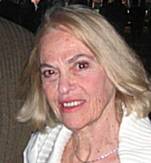
Olga Zabludoff
Dear Donatas,
The ball is now in my court and I am happy to continue the discussion. It might be that you and I have an irreconcilable difference of opinion on the subject of Jewish contributions to the Lithuanian economy, or -- as you maintain -- the lack of Jewish contributions. Let me try once more to convince you.
You point out that on the eve of World War 1 the economy of “Mother Russia,” which had an insignificant Jewish population, and the economy of Lithuania, which had a substantial Jewish population, were pretty much equal – depressed and backward. You emphasize that in spite of the fact that Jews participated in Lithuania’s economy but did not participate in the economy of czarist Russia, there was no virtual difference in the two economies.
Logic 101: If Jews had not been present in Lithuania at the time and therefore had not participated in its economy, perhaps Lithuania’s economy might have been even weaker than that of “Mother Russia.” Participating in a nation’s economy does not mean controlling the economy of that nation, let alone an entire region. Conditions in Eastern Europe during that period were what they were; the result was a weak and undeveloped economy.
Your grandfather in Ylakiai obviously was a kind and generous man to have opened his home to a Jewish family whose house had burned down. Good neighbors helped less fortunate ones. Just as your father held fond memories of the time the Jewish family had lived in his house, my father told me stories of how his mother, a widow with eight children, had been beloved by most of the Lithuanians in her town.
My grandmother owned a grocery-and-whatever store – the front room of the house. Often Lithuanian neighbors would come without money to pay for what they needed. It was known that Rochel-Leah never turned anyone away. She gave them “credit.” Sometimes she collected her debts; more often they just accumulated.
Stories like these of their daily lives – Lithuanians helping Jews and Jews helping Lithuanians – drive home the point that these two peoples could live side by side in harmony and friendship for many centuries, each maintaining its distinct traditions and religious beliefs. Which makes even more inconceivable the savagery of the summer of 1941 when hate and greed replaced love and loyalty.
But now, back to the subject of monopolies and price-fixing. Supply and Demand is one of the most fundamental concepts of economics. It is the backbone of a market economy. Perhaps the Lithuanian farmers in the first half of the 20th century did not understand this, but surely an educated man like you knows all about supply and demand. You make it sound like a conspiracy of the Jews to cheat the farmers and producers by paying them lower prices. In some years over-production of crops created a staggering drop in prices. The Jewish shop-keepers did not buy at criminally low prices in the market and sell at criminally high prices in their shops. The farmers themselves, whether they realized it or not, were creating the market, the cause and effect, or supply and demand. Ignorance can be very dangerous. The theory that the Jews were creating monopolies and fixing prices could easily have fueled the rage of the Lithuanians against the Jews in the summer of 1941. All they needed was the Nazi propaganda to ignite the fuse.
Yes, I know that politics can be false and politicians can deliver gratuitous speeches because it serves their agendas or pleases their hosts. So I concur that Mr. Kubilius may have been generous in his praise of Jewish involvement in Lithuania’s development of science, economy and culture. But, on the other hand, I doubt very much he went as far as total fabrication. While Lithuania may not have developed space scientists or nuclear physicists, certainly they had their share of physicians, physicists and chemists. And I can assure you that Jews were in the highest percentages per capita in these scientific fields. That’s because education was among the highest values in Jewish culture.
You mention that Dovid Katz impressed you as thoughtful and helpful in your meetings and communications with him. But lately he has “gone off the deep end.” What has happened to alter your former favorable impression of him? If you will visit
http://holocaustinthebaltics.com/7-solutions
written just one month ago by Dovid Katz, you will read a concise and perfectly lucid recommendation for improved relations between the Lithuanian government and the Jewish community. While anyone is free to disagree with Professor Katz’s views, is it unconscionable that a witch hunt is currently in effect against those who dare to have a second opinion in a European Union NATO democracy. It is my understanding that the problem is not between most Lithuanians and most Jews but between the Jewish community and the Lithuanian government which appeases the ultra-nationalist element.
Likewise, regarding Efraim Zuroff’s viewpoints on the subject of Lithuanian-Jewish relations, I see no reason to malign him. It is a sad symptom of the ultra-nationalist influence in Lithuanian politics that the image of an evil Zuroff is perpetrated against a man who spends his life representing the victims of the Holocaust. He asks only that suspected war criminals be given a fair trial in their own country. Is it not a cause for pause for Lithuanians that Dr. Zuroff was awarded a medal by the president of Croatia for the same work for which he is so vilified by the far-right in Lithuania?
While, as I stated in my last post, I see no reason to have to defend Professor Katz, let me make a few points about his character so that he can be judged fairly. After decades as an acclaimed educator – the first eighteen years at Oxford University followed by a year at Yale, where he turned down a multi-year offer in favor of a position at Vilnius University, remaining there for eleven years – he was discontinued. No reason was given for his termination other than informal boasts that he should never have spoken out in the Western press about the persecution of Holocaust survivors who had joined the partisans.
Does it not give cause for pause that the country's last Jewish professor, and its only Yiddish professor, was dismissed because he had published articles in respectable Western publications protesting the government's campaign against Holocaust survivors who joined the resistance? Is this how Lithuania is going to build a civic society where free debate and disagreement are nurtured among the younger generations?
I have never heard the argument that the Green House is the only Holocaust Museum in Lithuania. But it is the only Holocaust Museum in Vilnius. The Museum of Tolerance, while a part of the Vilna Gaon Jewish State Museum, is more of a cultural museum than anything else. I recall that the exhibits are displays of the works of Jewish artists and sculptors and other similar genres. The Museum of Genocide, which should not be called a “genocide” museum, is of course dedicated to Soviet crimes in Lithuania. Despicable and cruel as were the deportations, imprisonments, executions and tortures, the Soviets did not commit genocide on the people of Lithuania. So why is this museum called a genocide museum with not a word of mention of the Holocaust? That is, until last month when -- thanks to Dovid Katz, Efraim Zuroff and others who brought the issue to the attention of the world -- a small exhibit was finally added in the cellar.
Concerning the alleged slaughter of the Kaniukai villagers by anti-Nazi partisans, let me be very clear: IF there is a single specific charge of willful action against a civilian by veterans of any side, then of course that person should be prosecuted to the full extent of the law. But that is not what happened here. Yes, the Soviet partisans attacked a village whose occupants had been heavily armed by the Nazis and who were killing off partisans over many months. Yes, there was a battle. But in recent years, prosecutors have started a campaign against only Jewish survivors of the anti-Nazi partisan movement without an iota of evidence, without any charge, with a horrific campaign of defamation that is a disgrace to modern Lithuania. The majority of Soviet partisans were not even Jewish.
How dare a state prosecutor target survivor-partisans as war criminals when these same prosecutors have failed to bring a single Lithuanian murderer to justice? How dare they “investigate” unproven “crimes” while the government and parliament honors the memory of the killers with the white armbands (the Lithuanian Activist Front)? And while courts legalize the display of swastikas in public? Dovid Katz has spoken out against this gross abuse of prosecutorial powers in the country, putting the issue into the public arena and into history. Now, of course, Lithuanians who would like to speak out are afraid to do so because they too would lose their jobs and careers.
Please walk with me through the barbed wire of the double-genocide concept. As I have noted in earlier posts, clearly there was only one genocide. If history teachers throughout Lithuania will teach students about two concurrent genocides; if textbooks will be slanted to teach that same concept to children and youth, their education will be a jaded version of the true history of the World War 11 era.
Children are not born with evil. Unless they are taught to understand the consequences of hatred and bigotry, unless they are taught and shown what pain and suffering does to others, they simply won’t know how to make judgments or how to choose values. If the Holocaust is taught with a view to protecting youth from the truth, the authors of a distorted history will bear the responsibility of their contrivances.
- Bookmark :
- Digg
- del.icio.us
- Stumbleupon
- Redit it
- Posted by - (1) Comment

10 000 Lithuanians live
in Arizona, USA
“More than national pride, being Lithuanian is a state of mind.” This can be read at a new Facebook page, “Lithuanians of Arizona”, which was recently established.
Some active individuals among the approximately 10 000 Lithuanians who live in this hot state at the border of Mexico have decided to create a new communication platform to better achieve dialogue and information exchange between all Lithuanians who live in the state. The initiative for the Facebook page was taken after a large picnic event early this November. This is what the initiators write:
“During the annual Arizona Lithuanian Community Picnic in Tumbleweed Park, in Chandler, Arizona, we decided to start a Facebook group to complement the www.lithaz.org web site. This group is dedicated to Lithuanians in Arizona, around the world, or to anyone who is Lithuanian in mind and spirit.”
VilNews applauds the initiative, and we are happy to make our columns available to news updates and information from Arizona and other states or countries where Lithuanians live!
Lithuanians Of Arizona are now on Facebook.
Click here to join them!
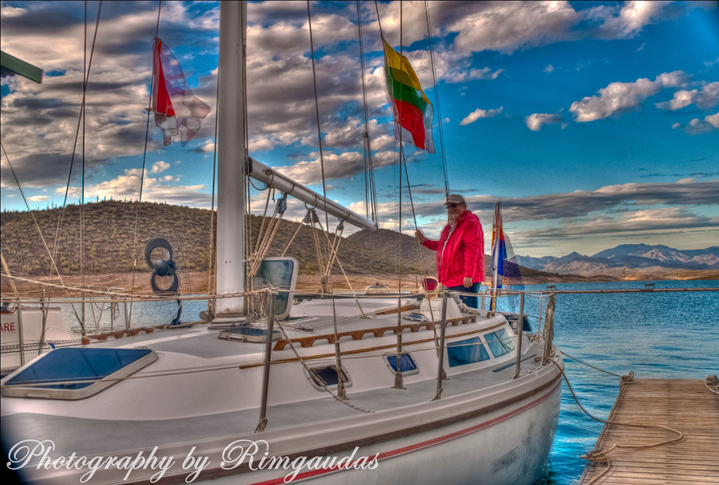
"I found the Lithuanian Flag at Scorpion Bay Marina, Lake Pleasant Arizona, United States of America aboard "Miss Behavin III". 12 November 2011.
Photography by Rimgaudas
Rimgaudas P. Vidziunas aka "Rim", Mesa, Arizona
- Bookmark :
- Digg
- del.icio.us
- Stumbleupon
- Redit it
- Posted by - (0) Comment

10 000 Lithuanians live
in Arizona, USA
“More than national pride, being Lithuanian is a state of mind.” This can be read at a new Facebook page, “Lithuanians of Arizona”, which was recently established.
Some active individuals among the approximately 10 000 Lithuanians who live in this hot state at the border of Mexico have decided to create a new communication platform to better achieve dialogue and information exchange between all Lithuanians who live in the state. The initiative for the Facebook page was taken after a large picnic event early this November. This is what the initiators write:
“During the annual Arizona Lithuanian Community Picnic in Tumbleweed Park, in Chandler, Arizona, we decided to start a Facebook group to complement the www.lithaz.org web site. This group is dedicated to Lithuanians in Arizona, around the world, or to anyone who is Lithuanian in mind and spirit.”
VilNews applauds the initiative, and we are happy to make our columns available to news updates and information from Arizona and other states or countries where Lithuanians live!
Lithuanians Of Arizona are now on Facebook.
Click here to join them!
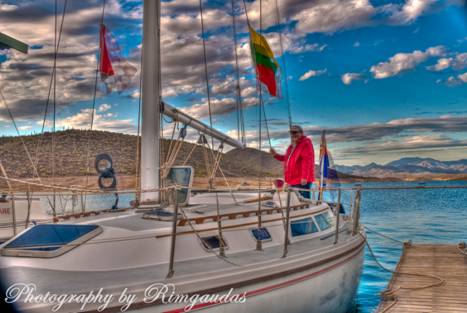
"I found the Lithuanian Flag at Scorpion Bay Marina, Lake Pleasant Arizona, United States of America aboard "Miss Behavin III". 12 November 2011.
Photography by Rimgaudas
Rimgaudas P. Vidziunas aka "Rim", Mesa, Arizona
- Bookmark :
- Digg
- del.icio.us
- Stumbleupon
- Redit it
- Posted by - (0) Comment
|
Lithuanians started to come to Arizona before World War I. Then, as now, it was the warm and dry climate of Phoenix and Tucson, located in the desert regions of southern Arizona, that attracted them. The first Lithuanians came to Arizona to recover from lung illnesses, rheumatism or arthritis. Being ill and few in number, they did not leave a major cultural legacy. Where is Arizona? Read more about Arizona at: |
U.S. Census:
|
- Bookmark :
- Digg
- del.icio.us
- Stumbleupon
- Redit it
- Posted by - (1) Comment

Lithuanians started to come to Arizona before World War I. Then, as now, it was the warm and dry climate of Phoenix and Tucson, located in the desert regions of southern Arizona, that attracted them. The first Lithuanians came to Arizona to recover from lung illnesses, rheumatism or arthritis. Being ill and few in number, they did not leave a major cultural legacy.
The number of Lithuanians in Arizona started to increase only after 1935. Younger ones took up farming, the trades, businesses and worked in the industry, but most of them came to retire.
During World War II a number of military training bases were located in the Arizona desert and many young men became acquainted with Arizona's wonderful climate while in military service. Many of them returned to Arizona after the war, starting the fast growth of Arizona cities. Among the returning veterans were a number of Lithuanian-Americans as well.
A pleasant climate, beautiful desert, and urban growth also attracted high-tech industries, scientists, engineers and technicians.
The 2000 US census showed about 10,000 Arizonans acknowledging their Lithuanian roots. Majority of them were second, third and later generation Americans and children of mixed ethnic marriages.

Above and below: Photos of Lithuanians Of Arizona in AZ Lithuanian Party, November 6, 2011
|
|
|

Lithuanians in Arizona:Lithuanian Roman Catholic MissionBefore 1968Rev. Antanas Bertašius, a priest who recently arrived from Lithuania, started work at St. Gregory's Parish in Phoenix in 1953. He also found time to provide pastoral services to local Lithuanians. But soon, in 1954, he was transferred to the El Paso diocese and for a long time Phoenix was without a Lithuanian priest.
Establishment of the MissionFinally, in 1968, through the efforts of Justinas and Teofilė Šaulys, a Lithuanian Mission was established in Phoenix and Rev. Antanas Valiuška was assigned as its chaplain. In the fall of the same year a mission support committee was formed. Because Phoenix Lithuanians came from three distinct groups (old immigrants, new immigrants, and those who grew up in the U.S. or English speakers), all three groups were represented in the committee: chairman Justinas Šaulys represented the new immigrants, treasurer Romualdas Stasiūnas - the old immigrants, and secretary Betty Medzius - the English speakers. Among the first supporters of the Mission were Leonardas Strikauskas, Jenny Petrošius, Betty Medzius, Justinas Šaulys, Emilija Josen, Marijonas Dambrauskas, Konstancija Rudaitytė, Romualdas Stasiūnas, B. Millius, Algis Rimavičius, Vytas Sinkus, J. Globis, Jonas Kranauskas, and L. Behnle. On Sunday's after the Mass, local Lithuanians had an oportunity to associate with each other. Often Mass was followed by meetings, discussions, and other events. From the very start, the Lithuanian Mission found a home in the very nice facilities of the Sacred Heart Home of The Little Sisters of the Poor) Rev. A. Valiuška was allowed to live there rent-free, which he did for about a year. The chapel within the spacious Home was used for Lithuanian Mass, funerals, Stations of the Cross, rosaries, choir practice and even meetings. The sisters even joined in Lithuanian activities. Sister Aimee often sang with the choir and solo, Sister Gabriele played on the organ, and Sister Teresa decorated the altar for the Lithuanian Mass. Since the Sisters did not charge for the use of the chapel, Lithuanians showed their gratitude by participating in large numbers at events and bazaars organized by the Sisters. Lithuanians prepared food and lotteries for these events. Proceeds from these events helped the finances of the Home. Key organizers of the Lithuanian contributions were Vytautas and Lucija Mozartas, William and Angie Faber and Stanley and Sally Pudinas. In 1969 the Lithuanian Mission started publishing a newsletter in Lithuanian named Arizonos Lietuvis ("Arizona's Lithuanian") with news of the Lithuanian parish.For English speakers a part, first prepared by Betty Medzius and later by Violet Kurilla, was in English. For a long time the newsletter was published by Leonardas Strikauskas, who donated his time and effort. The newsletter survived on the donations of the parishioners. In 1969 Rev. A. Valiuška acquired a small house, because the Sisters needed more space for the old people they took care for. After a year, the house was slightly expanded, but it was still too small for the activities of the Mission. In 1973 a bigger house was bought, where meetings, choir practice and other activities could be accommodated. On Feb. 15, 1970, when Lithuanians in Phoenix were celebrating Lithuanian Independence Day, Edward McCarthy, the new Bishop of Phoenix participated in the Lithuanian Mass with a nice sermon. The Mass was attended by bout 200 people. Music professor Aleksandras Aleksis, a visitor from Waterbury, CT, prepared the church choir to sing Lithuanian religious hymns and himself sang solo Panis Angelicus. After Mass the bishop met with Lithuanians and was presented with a gift of Lithuanian art. 1971 was a year of expansion for the Mission due to the arrival of more Lithuanians in Phoenix. Among them were Stanley and Marijona Druktenis, Marija Gilys, Joe and Ann Lalis, Petras and Jadvyga Maldeikis, Antanas and Ona Metrikis, Pijus and Adolfina Mickevičius, Bruno Steponaitis, Mačys and Z. Pagrandis, Jonas Šereiva, Veronika Usoris, Joe Biknius and others. They joined the activities of the Mission and the wider cultural activities of the local Lithuanian community. Ona Metrikis was a musicologist, she quickly took charge of the Lithuanian choir, and the quality of the singing during Mass started to improve. When Ona Metrikis moved to California, the leadership of the choir was taken by Sister Gabrielle, later by Evelyn Winters, and later yet by Rose Sanders.
Moves to Sun City and GlendaleAfter a number of years the city of Phoenix decided to build an expressway through the area and the Home operated by the Sisters was torn down. For several years until Rev.Valiuška moved to California, Lithuanian Mass was celebrated at the Sunland Memorial Park chapel in Sun City. After 40 years of service in Indian-Mexican parishes in Tucson, on February 24, 1989, Rev. Romanas Klumbys was confirmed as the chaplain of the Lithuanian Mission. He moved to Sun City. Because of his good connections with Mexican parishes he was able to transfer the Lithuanian religious services to the Our Lady of Guadalupe chapel in the nearby town of Glendale, Arizona. After retiring from papal service in the Vatican, Archbishop Paul Marcinkus moved to Sun City, Arizona in January, 1991. When Rev. Klumbys passed away on October 11, 1991, Archbishop Marcinkus assumed the pastoral duties at the Lithuanian Mission until his own death on February 20, 2006. Because the Archbishop did not accept any financial compensation for his service to the Lithuanian Mission, the Mission made substantial donations to the St. Casimir Lithuanian College at the Vatican in the Archbishop's name twice a year: on his birthday and on his name's day. After the Archbishop's death, Lithuanian Mission stopped functioning.
Mission Support CommitteeIn the performance of his duties and in serving the Lithuanian public, the chaplain was assisted by members of the Mission Committee. The Committee was headed by (the list is incomplete): · 1968 - 1971 Justinas Šaulys · 1971 - ???? Petras Maldeikis · ???? - 1992 Antanas Ambraška · 1992 - 1996 Ona Adomaitis · 1996 - 1998 Aldona Klemka · 1998 - 2006 Algis Kvedaras Lithuanian Mass and other events organized by the Mission served the spiritual and social needs of the Phoenix area Lithuanians. Coffee and snacks after Mass was very popular. Other Lithuanian organizations (e.g. Arizona Chapter of the Lithuanian American Community) used these opportunities to hold their meetings as well. From 1991 to 1997, the Mission organized Lithuanian Christmas Eve dinners. In April of 1997, Mission organized the 50th anniversary celebration of Archbishop Marcinkus priesthood. Deaths and illnesses continued to diminish the number of regular attendees. By the fall of 2000, the numbers were down to 15-20 and Lithuanian Mass became celebrated only twice a month. On some important holidays, however, the numbers would swell to as high as 40. |

|
Lithuanians in Arizona: Lithuanian Choir |
|
With the start of Lithuanian church services at the chapel of the Sacred Heart Home of the Little Sisters of the Poor in 1068, a group of Lithuanian worshippers started to accompany the services with Lithuanian church hymns. Encouraged by Rev. A. Valiuška, the mymn singers started to form themselves into a choir, periodically getting together for choir practice. An Irish-American resident of the Home and a former professor of drawing and music at Temple University and aunt of Arizona governor Bruce Babbitt, Margaret M. Walsh, agreed to lead the choir and also became the first organist for the Lithuanian Mission. Although she knew no Lithuanian and her hearing was getting wore, Margaret Walsh was able to perform these duties for about two years. Some of the Sisters found it enjoyable to join in the singing. Sister Aimee sang solo and with the choir and Sister Gabrielle helped out on the organ. The choir made a major step forward with the arrival in the Phoenix area of the Metrikis family in the spring of 1971. Mrs. Ona Metrikis was musically educated. She was an accomplished pianist, composer, and conductor. She took charge of the choir and soon the quality of the singing was greatly improved. The choir also expanded its repertoire. During Lent in 1972, the choir performed a concert of religous hymns. The performance included one of Ona Metrikis compositions "Hymn to St. Casimir." On 1973 Shrovetide the choir gave a concert in the Ukrainian Hall. The choir accompanied by Ona Metrikis on the piano also contributed to the cultural part of the Lithuanian Independence Commemoration. The most active period in the life of the choir, however, came to an end, when Ona Metrikis moved back to Los Angeles in 1975.For a time the leadership of the choir was taken by Sister Gabrielle, later by Evelyn Winters, a resident in the Home and former pianist, and from September 1976 by choir member Rose Sanders. |
Lithuanians In Arizona:Dance Group "Saulė" |
|
In 1999, through the efforts of Dalia Motiejunas and Aldona Vaitkus, a Lithuanian folk dance group called "Saulė" (or Sun in Lithuanian) was organized in Arizona. It began with veteran dancers living in the metropolitan areas of Phoenix, Tucson, and Casa Grande, but in time expanded to include a number of younger dancers. The original goal for the group's formation was to perform at the upcoming 11th Lithuanian Folk Dance Festival in Toronto on July 2, 2000. Dalia Motiejunas agreed to become the dancing instructor for the group and attended a week of intensive training at Dainava in Michigan in the summer of 1999. To practice dancing a location was found equidistant from Phoenix and Tucson - the American Legion hall in Florence, Arizona, and practice began in the fall of 1999. During a period of nine years (2000-2008) "Saulė" performed at a number of cultural events (see the partial list below). Eventually, however, dance instructor Dalia Motiejunas and several dancers moved away. Unable to find replacements, the dance group ceased to exist after participating at the Lithuanian Folk Dance Festival in Los Angeles on July 6, 2008. Practice for this festival was held at the Casa Grande home of Carol and Don Adamavich. |
|
"Saulė" dancers in Florence, Arizona, in the spring of 2000: in the front row from the left are Siga Eidukonis, Aldona Vaitkus,Violeta Juodakis, Maryte Tallat-Kelpsa; Ruta Motiejunas, Antonija Petrulis, and Rima Reklaitis; in the back are Kestutis Eidukonis, Rimas Vaitkus, Rimtis Tallat-Kelpsa, director/instructor Dalia Motiejunas, Don Adamavich, Algis Motiejunas, and Vytas Reklaitis. |
|
Some events at which "Saule" performed |
|
· June, 2000: Performance for locals in Florence, Arizona · Jul. 2, 2000: 11th Lithuanian Folk Dance Festival in Toronto · Oct. 14, 2000: Tucson Heritage Experience Festival · Feb. 11, 2001: Lithuanian Independence Day Commemoration · Feb. 10, 2002: Lithuanian Independence Day Commemoration · Jul 3. 2004: 12th Lithuanian Folk Dance Festival in Chicago · Jul 6. 2008: 13th Lithuanian Folk Dance Festival in Los Angeles |
- Bookmark :
- Digg
- del.icio.us
- Stumbleupon
- Redit it
- Posted by - (3) Comment
From Arizona, USA
News, ideas, questions and offers, presented by:

Click here to open the Rat Pack page
….and the photographer Rimgaudas Vidziunas
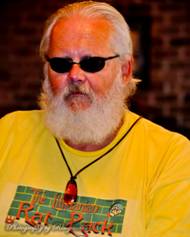
Go to ‘The Lithuaninan Rat Pack’ if you have an interest in "The Lithuanian Rat Pack" t-shirts. Thanks, ~Rimgaudas~
- Bookmark :
- Digg
- del.icio.us
- Stumbleupon
- Redit it
![]()

Thanksgiving is a way for Lithuanian immigrants to celebrate being in America and to share that celebration with everyone in the nation—from the descendants of the people who arrived here on the Mayflower to a family that arrived here last year.
When families immigrate to the United States, they often keep to the foods of their native countries. They also tend to continue their traditional holidays. The one American event that gets incorporated into the holiday cycle of almost every new arrival is Thanksgiving. It usually includes all the traditional foods—turkey, stuffing, pumpkin pie, sweet potatoes, cranberries and popcorn, but often with unusual twists that reflect our original homeland.
Any unusual twists on a Lithuanian-American Thanksgiving?
- Bookmark :
- Digg
- del.icio.us
- Stumbleupon
- Redit it
![]()
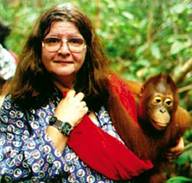
Famous Lithuanians: Birutė Marija Filomena Galdikas, (born 10 May 1946 in Wiesbaden, Germany to Lithuanian parents. A primatologist, conversationalist and author of several books relating to the endangered orangutan, particularly the Bornean orangutan. Well known in the field of modern primatology, Galdikas is recognized as a leading authority on orangutans. Prior to her field study of orangutans, scientists knew little about the species.
- Bookmark :
- Digg
- del.icio.us
- Stumbleupon
- Redit it
![]()

Famous Lithuanian: Anthony Kiedis born November 1, 1962) is an American vocalist/lyricist and occasional actor best known as the lead vocalist of the Grammy-winning American rock band Red Hot Chili Peppers.
- Bookmark :
- Digg
- del.icio.us
- Stumbleupon
- Redit it
There are growing tensions between Lithuania and the Polish national minority, the OSCE high commissioner said while on a visit to Lithuania
- Posted by - (0) Comment
![]()
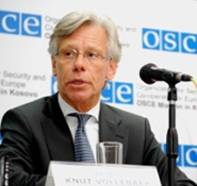
Knut Vollebaek.
The Lithuanian education minister, meanwhile, expects that the international community will see both sides after complaints from the Poles as the OSCE commissioner plans to announce his conclusions after his next week's visit to Poland. OSCE High Commissioner on National Minorities Knut Vollebaek came to Lithuania on a three day visit. After meeting with high officials Monday, he will go Tuesday to the Salcininkai district and visit Polish and Russian schools, reportsLETA/ELTA.
"We are worried. It is tension, not a conflict but tension. My aim is to try to identify the problem before it escalates into a serious conflict," Vollebaek told the LTV news service. "This visit could have been prompted by public complaints from various minorities, particularly from the Polish minorities," Education Minister Gintaras Steponavicius said.
Read more:
http://www.baltic-course.com/eng/baltic_states/?doc=48714
- Bookmark :
- Digg
- del.icio.us
- Stumbleupon
- Redit it
The Baltic States ask EU to help find compromise for new LNG terminal location
- Posted by - (1) Comment
![]()

Principle for the planned LNG terminal in Klaipeda: An FSRU (floating storage and re-gasification unit) will be moored to a pier (jetty) and every arriving LNG carrier will be moored to the FSRU, side by side.
The European Commission must find a compromise on the construction of a liquefied natural gas (LNG) terminal in one of the Baltic countries, the leaders of Lithuania, Latvia and Estonia said after they failed to reach agreement last week.
The failure to reach a deal on the new terminal prompted Latvian Prime Minister Valdis Dombrovskis to suggest that the three nations should instead agree to build a natural gas pipeline from Poland to Lithuania's capital of Vilnius.
At the meeting, the Latvian side reportedly insisted that Riga was the best location for a new LNG terminal, but Lithuania and Estonia said they would only agree with this if the European Union recognised Latvia as the most suitable place for the project.
In this context, Dombrovskis suggested that the Baltic countries should first agree on building a gas pipeline from Poland to Vilnius.
Such a pipeline would diversify gas supplies for Latvia, because the Polish pipeline is connected with Germany's network, whereas Latvia's gas pipeline is connected to that of Lithuania, Dombrovskis said.
Latvia could receive gas supplied from the LNG terminal in Poland near the Polish-German border, the Latvian prime minister said.
Dombrovskis' proposal took his Baltic colleagues by surprise, according to a report on the Baltic Course news website. They said that the suggestion would be evaluated, but neither Lithuania nor Estonia was prepared to give up its LNG projects.
Lithuania wants to build an LNG terminal at the southern point of Klaipėda Port.
Read more:
http://www.euractiv.com/energy/baltic-countries-ask-eu-solve-lng-terminal-row-news-508935
- Bookmark :
- Digg
- del.icio.us
- Stumbleupon
- Redit it
Gay, bisexual and trans women in Lithuania have written postcards to all the country’s MPs with the slogan, “Let’s speak”
- Posted by - (0) Comment
![]()

The female contingent of Lithuania’s LGBT population is severely under-represented, according to the country’s gay rights association Lithuania Gay League.
LGL’s on-going project Empowering LBT Women saw a group of volunteers send postcards to every member of the Lithuanian Parliament last week. The project is designed to promote dialogue and promote the population’s visibility at a national level
Read more:
http://www.pinknews.co.uk/2011/11/15/lithuanian-lesbians-send-handwritten-postcards-to-every-mp/
- Bookmark :
- Digg
- del.icio.us
- Stumbleupon
- Redit it
![]()
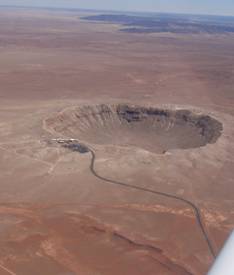
Place 21. Winslow, Arizona
This stunning shot of the Barringer Meteorite Crater in Winslow, Arizona is such a fine sight to see. It is estimated that the impact occurred around 50,000 years ago, the result of a meteor impact at some 25,000 mph. Putting it in military terms, the equivalent explosion would have been the same as a 20 Megaton hydrogen bomb.
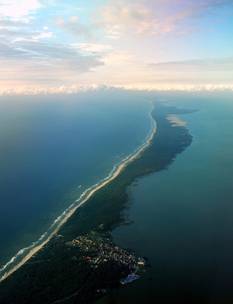
Place 16. Curonian Spit, Russia/Lithuania
This spit, shared by Russia and Lithuania is around 80 miles long and up to two miles wide and its largest girth. The photograph, entitled ‘Following the Sun’ is aptly named and is well framed giving an amazing sense of perspective towards the horizon.
Read more:
http://www.fhr-net.co.uk/blog/2011/10/19/21-awesome-views-from-plane-windows/
- Bookmark :
- Digg
- del.icio.us
- Stumbleupon
- Redit it
VilNews e-magazine is published in Vilnius, Lithuania. Editor-in-Chief: Mr. Aage Myhre. Inquires to the editors: editor@VilNews.com.
Code of Ethics: See Section 2 – about VilNews. VilNews is not responsible for content on external links/web pages.
HOW TO ADVERTISE IN VILNEWS.
All content is copyrighted © 2011. UAB ‘VilNews’.

 Click on the buttons to open and read each of VilNews' 18 sub-sections
Click on the buttons to open and read each of VilNews' 18 sub-sections 






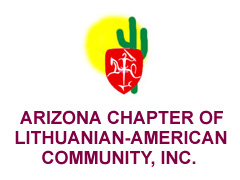





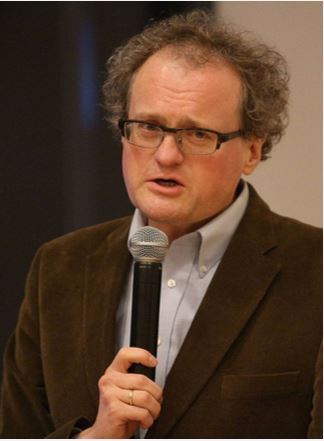
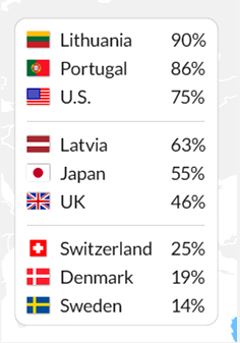
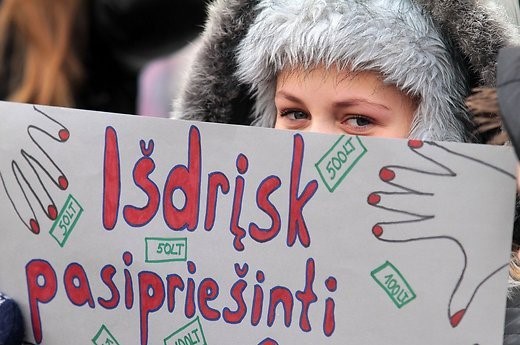


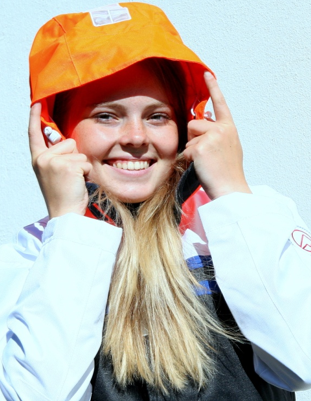
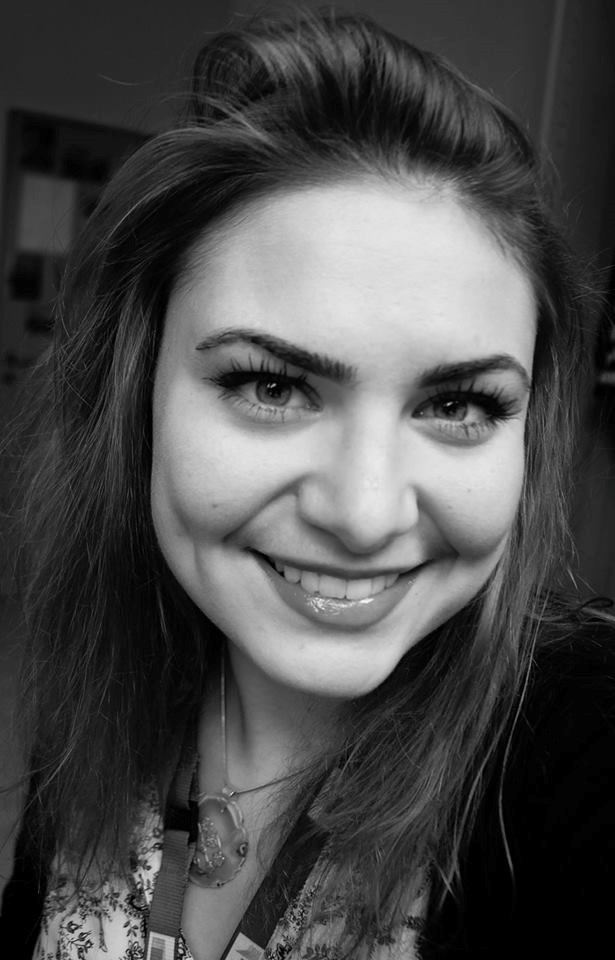
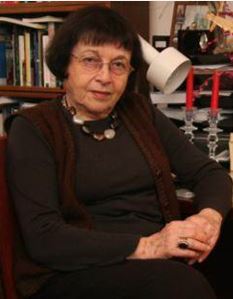
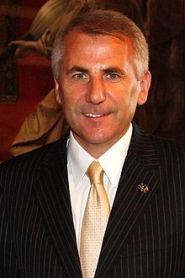
.jpg)
